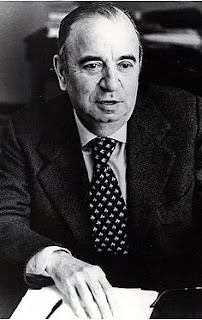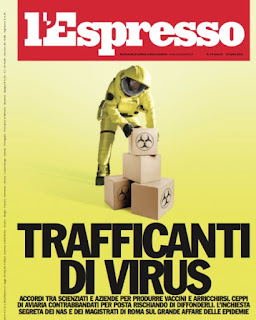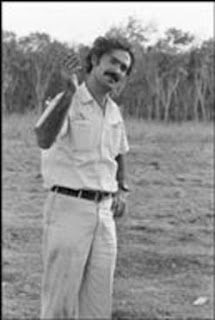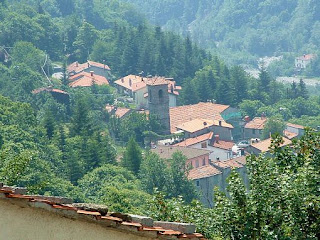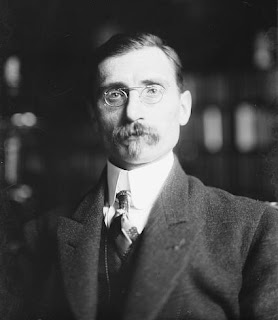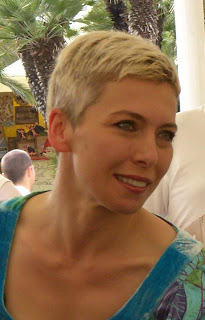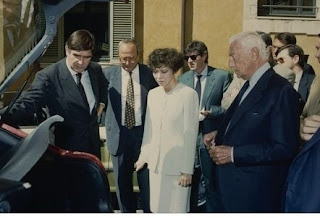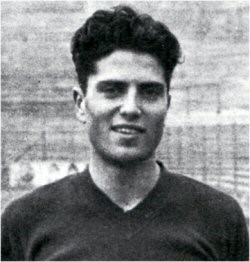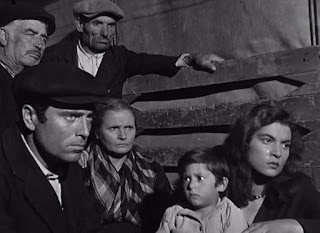Writer and broadcaster was first female to host prime time news bulletin
 |
| Lilli Gruber today conducts the current affairs talk show Otto e Mezzo on Italy's La7 channel |
In a distinguished career, as well as being the face of major news programmes for the national broadcaster Rai, Gruber has reported on many major international stories as a foreign correspondent, presented shows on German television, served as a Member of the European Parliament for five years, and written many books.
Since leaving politics in 2008, she has been the host of the long-running political talk show, Otto e Mezzo, on the Rome-based independent TV channel La7.
Nicknamed La Rossa both for her red hair and her political views, Gruber was born Dietlinde Gruber into a German-speaking family in Bolzano, the provincial capital of South Tyrol in the Trentino-Alto Adige region of northeast Italy, which borders Austria and Switzerland.
It was her father, Alfred, an entrepreneur, who gave her the pet name Lilli, which stayed with her into adulthood.
Educated partly in Verona, where her father built up a business making machinery for the construction industry, and in the town of Egna, near Bolzano, where she attended a language school, Gruber graduated in foreign languages and literature from the Ca’ Foscari University of Venice, before embarking on a journalistic career in her home region.
Alongside reporting for the regional newspapers L’Adige and Alto Adige, she gained some television experience with the local channel, Telebolzano, before landing a job on Rai Südtirol, also known as Sender Bozen, a German language channel for Trentino-Alto Adige, where despite being part of Italy, around a third of the population speak German.
.jpg) |
| Gruber made Italian TV history in 1987 as the first female journalist to host a prime time news show |
Her career flourished under the guidance of Antonio Ghirelli, TG2’s editor and a major figure in Italian journalism. As a foreign correspondent, Gruber reported in 1989 on the dismantling of the Berlin Wall, an experience that would become the subject of her first book, Quei giorni a Berlin - Those Days in Berlin - which was published in 1990.
In the meantime, Ghirelli had enabled her to make history by handing her the job of anchoring TG2’s main evening news programme, which aired at 7.45pm each weekday evening. The move broke new ground, Gruber’s professionalism meaning that what had been a glass ceiling on the career progression of women in Italian TV news coverage was shattered.
Her career soon continued on its steep ascent with a move to Rai’s flagship channel, Rai Uno, where she again combined foreign assignments with hosting. She became anchor for TG1’s main eight o’clock evening news programme while also reporting on the conflicts in Yugoslavia and Iraq and the 2001 terrorist attacks on the Twin Towers and the Pentagon in the United States.
It was while in Baghdad to report on the second Iraq war that she met Jacques Charmelot, a French journalist she would later marry.
 |
| Gruber was elected an MEP in the 2004 elections |
Gruber allied herself to the Uniti nell’Ulivo coalition, a centre-left alliance, and was elected as an MEP for central Italy in the July elections of 2004. She quickly became an effective politician, joining the parliamentary group of the European Socialist Party, becoming president of the delegation for relations with the Gulf States, a member of Committee on Civil Liberties, Justice and Home Affairs and of the delegation for relations with Iran. She also became a member of the EU’s Ethics Commission.
Yet she missed journalism and when an offer was made by the ambitious management of La7, which has become Italy’s largest TV company outside the auspices of Rai or Berlusconi’s Mediaset, to front their evening political debate, Otto e Mezzo, she felt she could not turn it down.
A versatile presenter fluent in four languages - Italian, German, French and English - she has also worked for a number of German TV companies and conducted an exclusive interview with the Italian actress, Sophia Loren, for the American network, CBS.
Famed for her dogged questioning in interviews with political figures, Gruber also became known as a stylish dresser, often presenting the news in tailored Armani suits. She became friends with Giorgio Armani, the designer who founded the brand in 1975 and who designed the honey-coloured gown she wore at her wedding to Charmelot in Montagna, a village near Bolzano, in 2000.
Gruber’s books have drawn on her experiences in journalism but also her passionate interest in women’s rights, particularly the rights of women in Islamic societies. Her book I miei giorni a Baghdad - My Days in Baghdad - sold more than 100,000 copies.
More recently, she has written a trilogy of novels about the history of her family and of South Tyrol between the 19th and 20th centuries, entitled Eredità (Inheritance), Inganno (Deceit) and Tempesta (Storm).
Travel tip:
The city of Bolzano sits in a wide valley in the
Alpine region of Trentino-Alto Adige (Südtirol)
Gruber’s home city of Bolzano is the capital of the South Tyrol region of what is now northern Italy, also known as Alto Adige. Occupying a valley flanked by hills covered in lush vineyards, it has a population of 108,000, swelling to 250,000 with all the surrounding communities. One of the largest urban areas in the Alpine region, it has a medieval city centre famous for its wooden market stalls, selling among other things Alpine cheeses, hams and bread. Places of interest include the South Tyrol Museum of Archaeology, the imposing 13th-century Mareccio Castle, and the Duomo di Bolzano with its Romanesque and Gothic architecture. Three languages - Italian, German and a local language called Ladin - are spoken in the area, which consistently polls high among the Italian cities reckoned to have the best standard of living. The nearest airport to Bolzano is at Verona, about 150km (93 miles) to the south and accessible in approximately an hour and a half by train, although some visitors arrive from Innsbruck in Austria, just over two hours by train in the opposite direction.
Travel tip:
Verona is a beautiful city in northern Italy,
flanking the Adige river
Verona, where Gruber spent part of her upbringing, is the third largest city in the northeast of Italy, with a population across its whole urban area of more than 700,000. Among its wealth of tourist attractions is the Roman amphitheatre known as L’Arena di Verona, which dates back to AD30. With a seating capacity of 22,000, it is best known now as a venue for large-scale open air opera performances and other music concerts. Verona was chosen as the setting for three plays by William Shakespeare – Romeo and Juliet, The Two Gentlemen of Verona and The Taming of the Shrew - although it is unknown whether the English playwright ever actually set foot in the city. Each year, thousands of tourists visit a 13th century house in Verona where Juliet is said to have lived, even though there is no evidence that Juliet and Romeo actually existed and the balcony said to have inspired Shakespeare’s imagination was not added to the house until the early 20th century.
Also on this day:
1588: The death of Renaissance painter Paolo Veronese
1768: The death of painter Canaletto, known for views of Venice
1937: The birth of chef and restaurateur Antonio Carluccio
1953: The birth of Olympic high jumper Sara Simeoni





